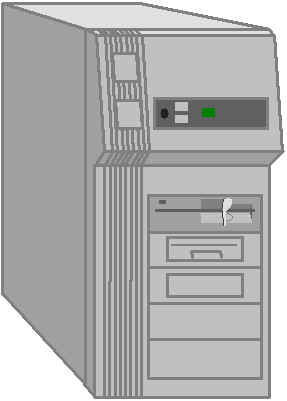|
| |
      
Technical issues can be perplexing! In this section
we attempt to explain technical matters that have special interest in the WISL community.
Client/Server
Client/Server is a computing environment that is
designed to take advantage of the best of both worlds of personal computing and multi-user
computing. Usually an application is initiated on the PC workstation and most of the user
interface activity is executed on the PC. However the data base that is associated with
the application(e.g. customer and order records) is usually stored on the server. Some
subroutines or processes of the application are also stored and executed on the server.
Requests from the client and results of processes or the results of data base lookups are
passed back and forth between the two systems as "objects" over the network.
Hence the user gets the familiar point and click interface and the data integrity of a
true multi-user shared data system.
Components
 | Client computer system(usually a PC workstation)
|
 | Server computer system - running a multi-user
operating system (e.g. UNIX, Windows NT, LINUX)
|
 | A Network, hardware and software e.g. Ethernet
& TCP/IP
|
 | Middleware, usually object oriented software e.g.
UniVerse Objects
|
 | An application language that executes on the
client and interfaces with the server via the middleware e.g. Visual Basic
|
Client
Network
Server



Example
In QUIKREP/CS the user is prompted for the name of
the desired target file for reporting using a list box presented by the program running on
the client. The contents of the list were earlier retrieved where they are stored on the
server. The user enters various report specifications under control of the program running
on the client but when the interactive activity is complete the file of specifications is
passed to the server for the report to be executed. The results from running the report
program are passed back to the client to be displayed under control of a process running
on the client. In this manner the routine which is normally initiated on the client
utilizes the strengths of each computing environment to provide the optimum operating
solution for the user.
|